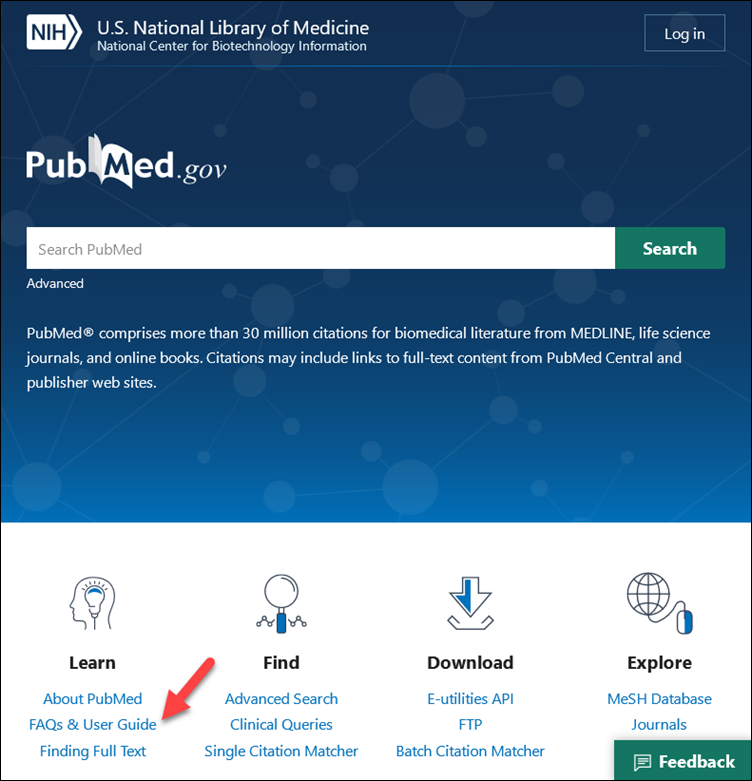Introduction to Bioinformatics Resources
What is Bioinformatics?
Imagine biology generating huge amounts of information – like the complete DNA sequences (genomes) of organisms, lists of proteins, results from countless experiments, and published research papers. How do we store, organize, search, and make sense of all this data?
That’s where Bioinformatics comes in!
Bioinformatics uses computers and specialized software to manage and analyze biological data. It’s a field where biology meets computer science. Think of it as using digital tools to understand life at the molecular level.
In this pre-lab, we’ll introduce three essential online resources that bioinformaticians and biologists use every day.
1. NCBI (National Center for Biotechnology Information)
What it is: NCBI is a part of the U.S. National Institutes of Health (NIH) and serves as a massive public resource for molecular biology information. Think of it as a giant digital library for biological data.
Key Features:
- Hosts Databases: NCBI manages many different databases containing various types of biological data.
- GenBank: One of its most famous databases, GenBank, is a comprehensive collection of all publicly available DNA sequences. When scientists sequence DNA, they often deposit it here.
- Other Data: It also stores data on proteins, genes, genomes, scientific literature, and much more.
Main Purpose: To provide access to and manage a vast amount of biological data, especially sequence data.
 (Image: NCBI Logo)
(Image: NCBI Logo)
2. PubMed
What it is: PubMed is a free search engine primarily accessing the MEDLINE database of references and abstracts on life sciences and biomedical topics. It’s also hosted by NCBI.
Key Features:
- Literature Database: Contains citations, abstracts, and sometimes full-text links for millions of articles from biomedical journals.
- Search Tool: Allows you to search for scientific papers using keywords, author names, journal titles, specific genes, diseases, etc.
Main Purpose: To find published scientific articles and research literature in biology and medicine. If you want to know what research has been done on a specific biological topic, PubMed is the place to start.
 (Image: PubMed Logo, Source: Wikimedia Commons)
(Image: PubMed Logo, Source: Wikimedia Commons)
3. PDB (Protein Data Bank)
What it is: The PDB is the single worldwide archive for information about the 3D structures of large biological molecules, such as proteins and nucleic acids (DNA, RNA).
Key Features:
- Structural Data: Contains experimentally determined 3D coordinate files for biological macromolecules.
- Visualization: Allows researchers to download structure files and use software to visualize what these molecules look like in 3D.
- Understanding Function: The shape (structure) of a molecule is often critical to its function. PDB helps researchers study this relationship.
Main Purpose: To store and provide access to the 3D shapes of biological molecules.
 (Image: RCSB PDB Logo)
(Image: RCSB PDB Logo)
How They Connect
These resources often work together:
- You might read about a newly discovered gene in a paper found via PubMed.
- The paper might provide an accession number (a unique ID) for the gene’s DNA sequence, which you can look up in NCBI’s GenBank database.
- If the gene produces a protein whose structure has been solved, you could find and visualize its 3D shape using data from the PDB.
Pre-Lab Check Your Understanding
Let’s test your understanding of these basic resources.
Conclusion
NCBI, PubMed, and PDB are fundamental starting points for exploring biological data and literature. Understanding what each resource offers will be crucial as you delve deeper into biology and potentially use these tools for research projects or finding information for your coursework. In the upcoming lab activities, you may get a chance to navigate these sites.
- Resources
- API
- Sponsorships
- Open Source
- Company
- xOperon.com
- Our team
- Careers
- 2025 xOperon.com
- Privacy Policy
- Terms of Use
- Report Issues